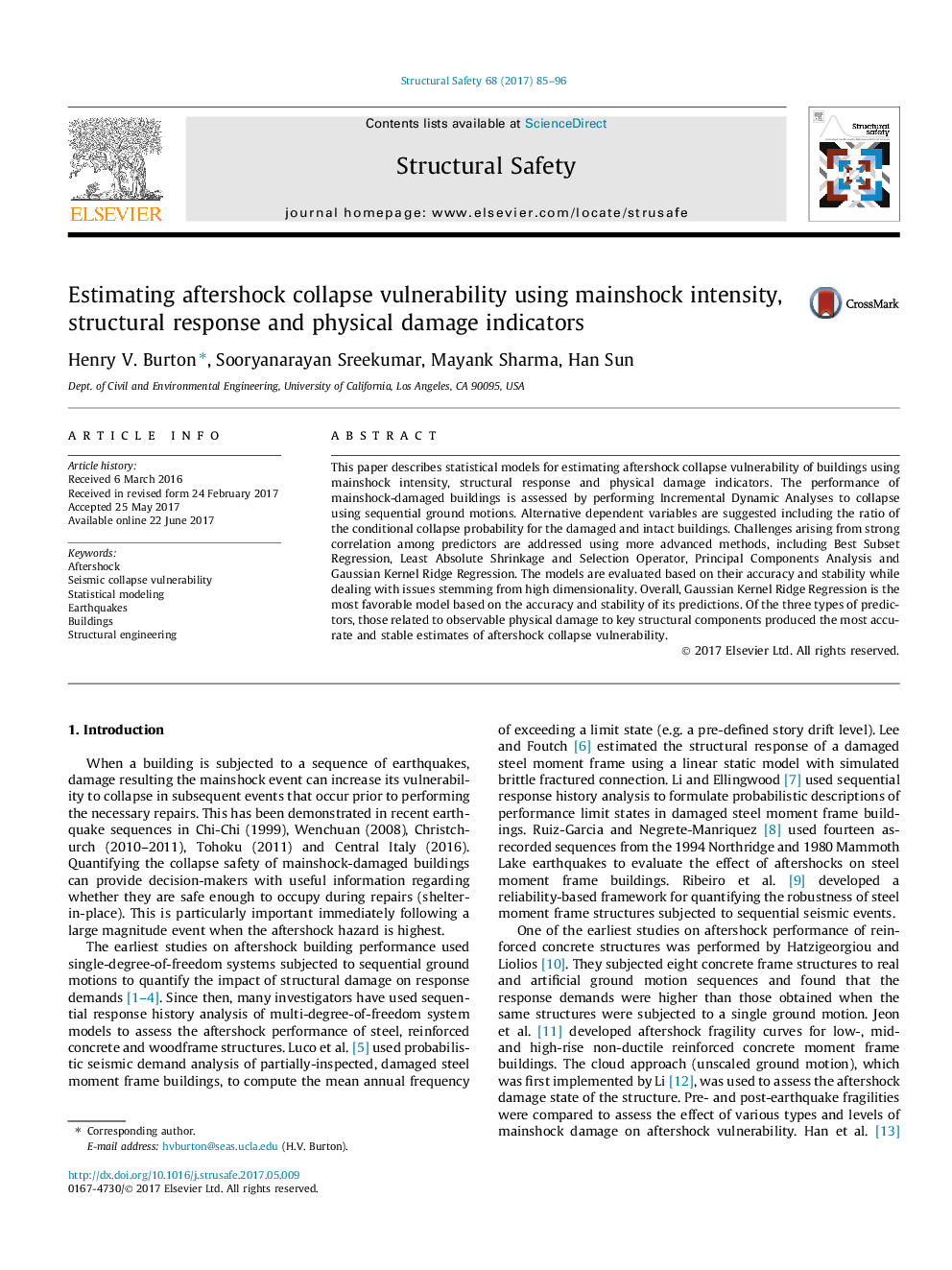| Article ID | Journal | Published Year | Pages | File Type |
|---|---|---|---|---|
| 4927764 | Structural Safety | 2017 | 12 Pages |
Abstract
This paper describes statistical models for estimating aftershock collapse vulnerability of buildings using mainshock intensity, structural response and physical damage indicators. The performance of mainshock-damaged buildings is assessed by performing Incremental Dynamic Analyses to collapse using sequential ground motions. Alternative dependent variables are suggested including the ratio of the conditional collapse probability for the damaged and intact buildings. Challenges arising from strong correlation among predictors are addressed using more advanced methods, including Best Subset Regression, Least Absolute Shrinkage and Selection Operator, Principal Components Analysis and Gaussian Kernel Ridge Regression. The models are evaluated based on their accuracy and stability while dealing with issues stemming from high dimensionality. Overall, Gaussian Kernel Ridge Regression is the most favorable model based on the accuracy and stability of its predictions. Of the three types of predictors, those related to observable physical damage to key structural components produced the most accurate and stable estimates of aftershock collapse vulnerability.
Related Topics
Physical Sciences and Engineering
Engineering
Civil and Structural Engineering
Authors
Henry V. Burton, Sooryanarayan Sreekumar, Mayank Sharma, Han Sun,
